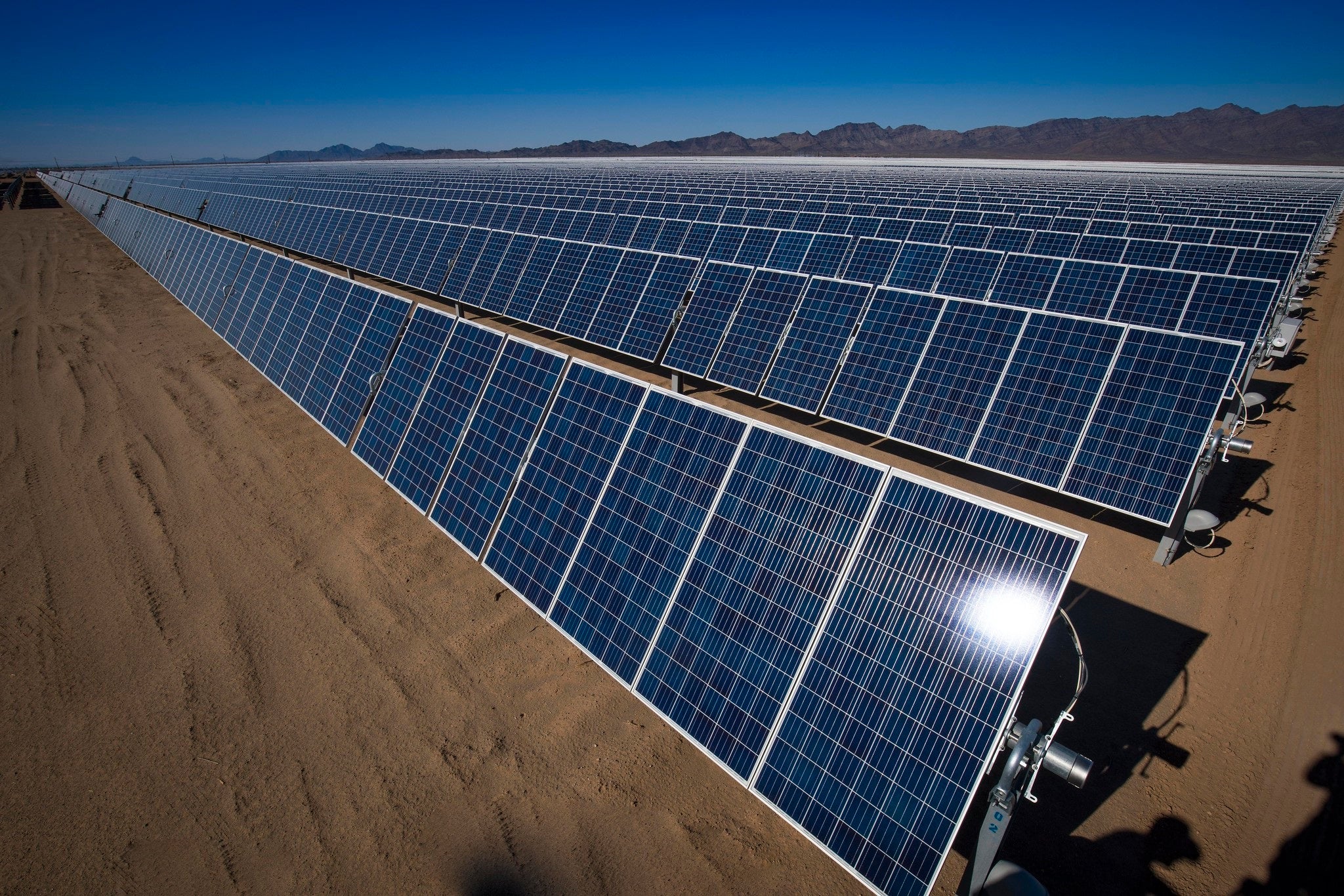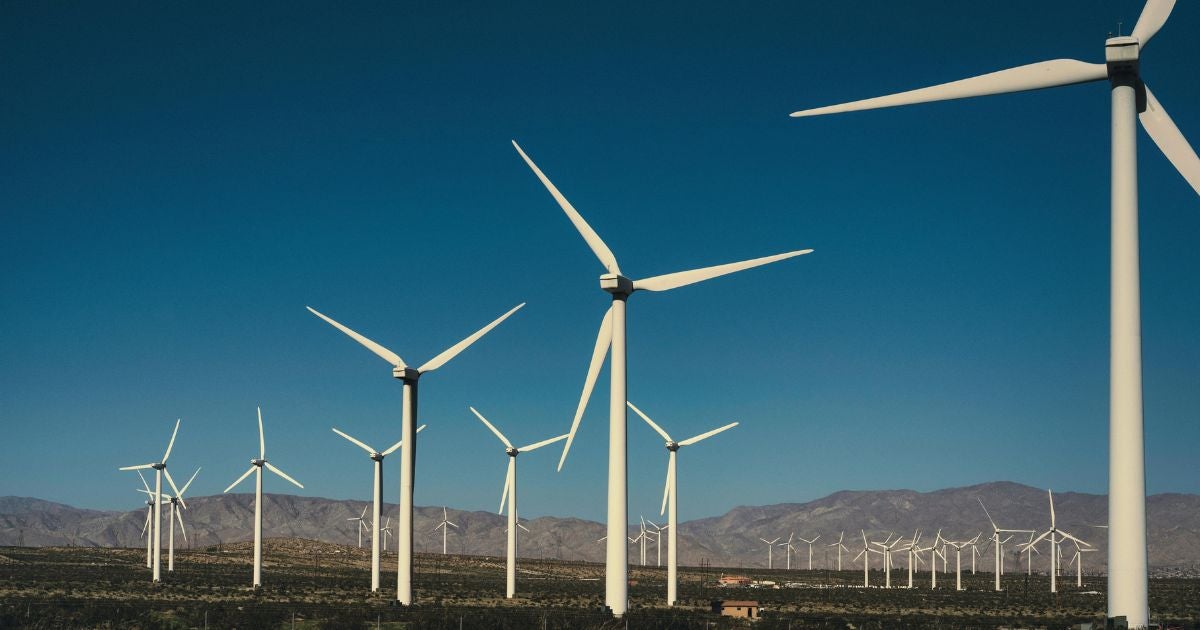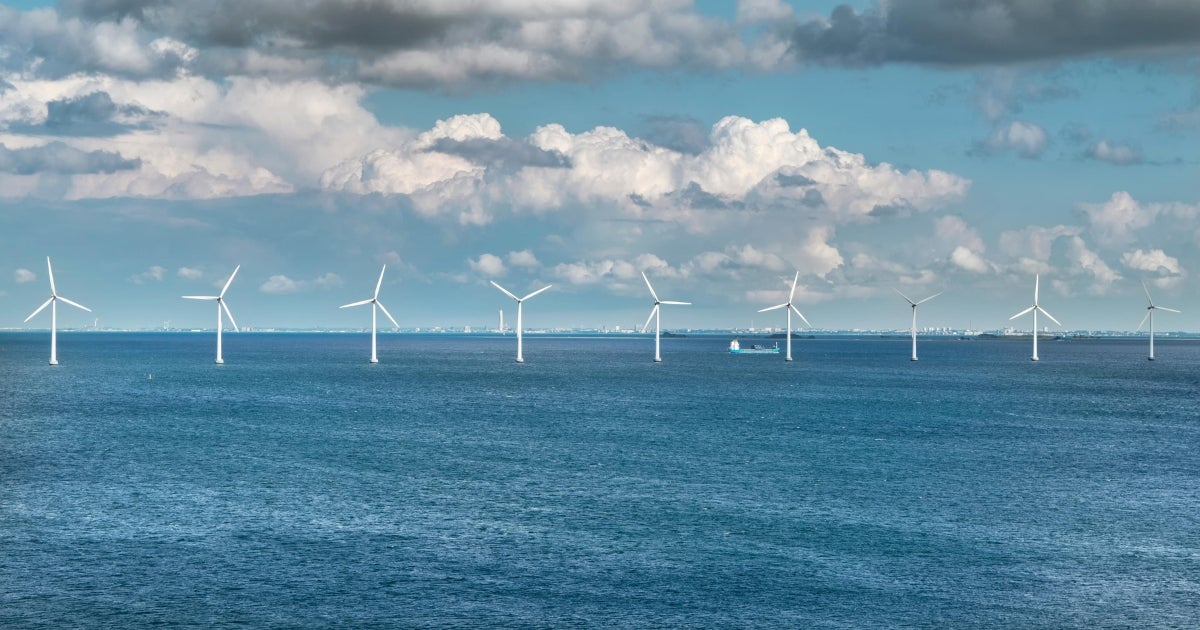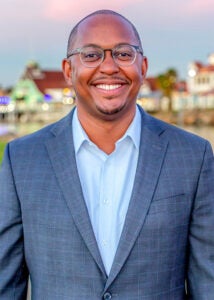Results were released today for Washington’s second cap-and-invest auction of the year, administered last Wednesday by the Department of Ecology (Ecology). During the auction, participating entities submitted their bids for allowances. Under the Climate Commitment Act — Washington’s landmark climate law that sets a binding, declining limit on pollution — major emitters in Washington are required to hold one allowance for every ton of greenhouse gas they emit, with the total number of allowances decreasing each year. This system requires Washington’s polluters to reduce their emissions in line with the state’s climate targets, as fewer allowances become available annually.
Climate 411
Cap-and-invest program continues to drive down climate pollution and raise investments in Washington state
As the California legislature looks to reauthorize cap-and-trade, they cannot forget the strongest climate safeguard the state has: the cap itself
In the face of federal attacks on U.S. climate progress, Governor Newsom recently announced that California was “doubling down on cap-and-trade: one of our most effective tools to cut emissions and create good-paying jobs.” And at the heart of that program is the emissions cap: the firm, declining limit on climate pollution that drives progress on emissions reductions across the state.
With the cap-and-trade program up for reauthorization this year and the California Air Resources Board (CARB) evaluating important program updates, now is a crucial moment to revisit what matters most: the cap.
What is the cap and why does it matter?
The cap is the foundation of California’s cap-and-trade program. It sets a binding, declining limit on greenhouse gas emissions from the state’s largest polluters, covering roughly 75% of statewide climate pollution. Each year, California issues a declining number of emissions allowances — each one representing one ton of carbon pollution — and the amount issued is limited to the total allowed under the state’s emissions cap. The allowances are either auctioned at quarterly auctions, or distributed to regulated entities to benefit ratepayers and insulate them from price impacts. Because the total number of allowances declines each year, overall emissions must also fall. The cap is what gives the cap-and-trade program its climate power. The built-in trajectory that the cap represents ensures steady, predictable progress toward California’s climate goals — as long as the cap is properly calibrated to achieve those goals.
California’s emissions cap is designed to help achieve both near- and long-term climate targets. Under the state’s 2022 Scoping Plan, California is aiming to cut emissions 48% below 1990 levels by 2030, and at least 85% below 1990 levels by 2045. Hitting those targets requires consistent and meaningful progress. The design of the cap, and especially how quickly it declines, plays a key role in determining how much pollution is avoided in this critical decade. These cumulative emissions are incredibly important: every ton of pollution we avoid emitting today reduces the long-term buildup of pollution in the atmosphere, limiting warming and the damage of future climate impacts.
Cap-and-trade is part of a broad suite of climate policies in California, including clean air standards, electrification efforts, and clean fuels. But while most policies are designed to incentivize reductions or reduce emissions from specific sectors or sources, the cap ensures that economy-wide emissions stay within the limit of the cap. That makes the cap a critical ‘insurance policy’ — even if other programs don’t deliver the level of emissions reductions they expected, the cap guarantees an upper bound on pollution.
How can the cap be strengthened?
Lawmakers have the opportunity this year to reaffirm their commitment to ambitious, effective climate action by extending the cap-and-trade program. The cap is what guarantees that emissions go down, and reauthorization should reinforce that core principle.
At the same time, CARB is evaluating near-term changes to the program through a rulemaking process. One of the most important choices on the table is how the cap will be structured until 2030. Encouragingly, CARB is considering options that would properly align the cap with emission reductions the 2022 Scoping Plan says are necessary. With reauthorization, lawmakers can ensure that this cornerstone program can keep delivering emissions reductions for Californians while generating billions of dollars in investments for climate resilience, environmental justice priorities and to help address affordability. Also, with the current rulemaking, CARB has the chance to make sure that these reductions are swift enough to avoid the worst impacts of climate change.
These are both necessary and crucial steps — strengthening the cap through long-term reauthorization and the rulemaking will keep California on track for near-term climate success, and create a model for other states to follow. Because — when it comes to California’s climate future — it’s about the cap.
Faster, affordable clean energy? This bipartisan bill delivers
Multiple energy reports all underscore the same finding: The U.S. is going to need more affordable electric power to supply data centers, manufacturing and homes around the country. A lot more of it.
Our country’s vast supplies of wind and solar resources are ready to be tapped to support that demand – from vast windy plains in the Midwest to sun-soaked areas in the Southwest. And these clean energy sources paired with battery storage are cost-effective too. Electricity from wind and solar costs less than electricity from gas and coal. But too often, wind and solar projects get delayed by complex permitting processes that take around four to eight years to complete. Those slow timelines cannot keep pace with America’s growing electricity demands.
The Energy Co-Location Act, introduced by U.S. Senators John Curtis and John Hickenlooper, offers a bright spot for bipartisan energy progress. The bill will bring more reliable and affordable power on the grid faster, by unlocking the potential for renewable energy on federal lands already used for energy purposes.
Here’s what you need to know.
California is on the path to a regional electricity market
This is the first in a blog series on the opportunities presented by the Pathways Initiative, focused on California. Check back for additional publications in the series coming soon.
California has taken a critical first step towards creating a cheaper, cleaner and stronger grid through the creation of a Western regional electricity market. By working more with its neighbors, California can unlock new clean energy technologies across the West, including offshore wind, long duration energy storage and other clean options that can take a long time to build. This type of cooperation will be essential to keep costs low as California both cleans up its existing electric grid to cleaner options and triple its size to help decarbonize the rest of the economy.
North Carolina can still avoid huge amounts of emissions (and stranded carbon emitting assets) under the state’s Carbon Plan Law. Here’s how.
On November 1, the North Carolina Utilities Commission issued an order in the Carbon Plan docket, almost two months ahead of schedule. It largely ratifies an agreement reached by Duke Energy and the state’s Public Staff, who are charged with protecting the state’s ratepayers. While the Commission drops the requirement for Duke Energy to model hitting the 70% carbon emission reduction by 2030 in state law, largely due to a boom in electricity demand, the utility is still required to take “all reasonable steps” to hit the target by the “earliest possible date.” Which begs the question, what is the earliest possible date? A new white paper from EDF comes to the conclusion that North Carolina can still hit the target by 2032, even with the new carbon-emitting resources moving forward under this order.
How Long Beach is Leading the Charge Toward a Clean Energy Future
Written Q&A with Mayor Rex Richardson on Climate and Economic Progress in Long Beach, California
Long Beach, California, is showing communities around the country why embracing the clean energy economy is a winning strategy.
Home to one of the busiest port complexes in North America, with a long reliance on revenue from oil and gas, Long Beach is now charting a new path that marries climate progress and economic progress. Under Mayor Rex Richardson’s leadership, the city is making bold moves to electrify its port and cut harmful pollution, land coveted EV manufacturing jobs, and leverage billions in federal investment from historic climate laws – all while lifting up frontline and disadvantaged communities hit hardest by pollution and climate impacts.
EDF has worked with Long Beach to host a roundtable of climate stakeholders to support their Climate Action Plan and continues to collaborate with the city through its partnership with the African American Mayor’s Association. To get deeper insights on the city’s transformation, I asked Mayor Rex Richardson about Long Beach’s climate and economic plans, some of the exciting projects that are underway now and what other mayors can learn from his approach.
Let’s start with some big recent news: Ford has officially chosen Long Beach as its new home to develop its next generation of small, affordable EVs. What kinds of jobs and business opportunities will this new manufacturing facility bring to Long Beach? What has the response from the community been?
RR: In the City of Long Beach, we are laying the foundation for the Long Beach of the future — a global, sustainability-centered hub that attracts emerging companies, industries, and technologies in clean and renewable energy. Our recent announcement that Ford Motor Company has chosen Long Beach as the home for its new Advanced Electric Vehicle Development Center is evidence of our unwavering commitment to move full-speed ahead towards a zero-emission future.
Ford plans to open their research-and-development campus in Douglas Park, adjacent to Long Beach Airport, in early 2025. This campus will include two buildings and will host around 450 employees focused on designing Ford’s next generation of low-cost, electric vehicles.
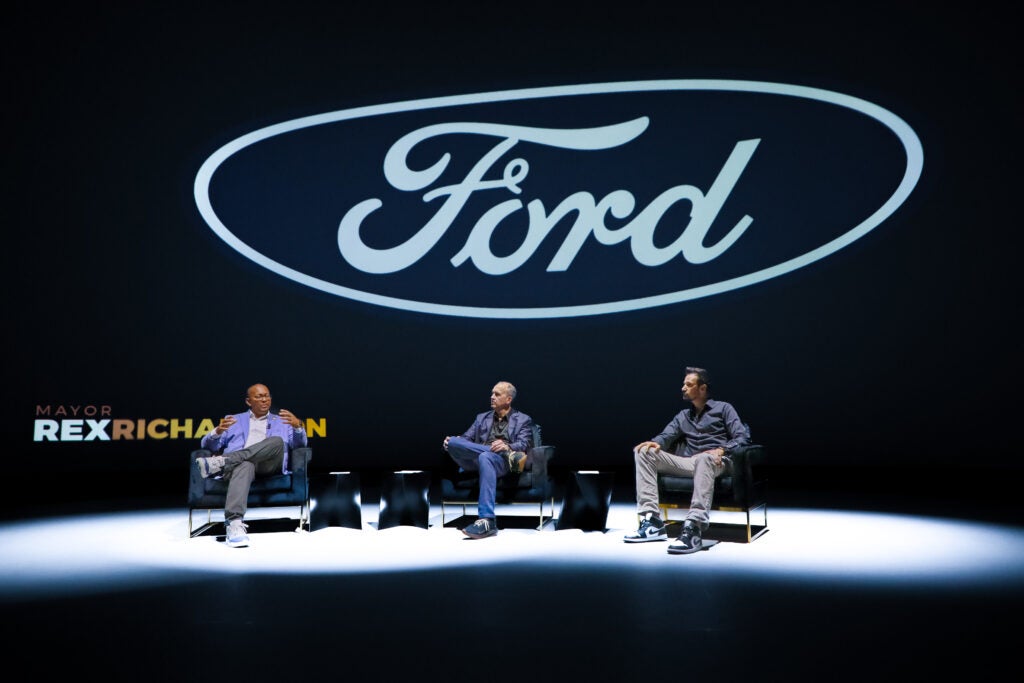
Long Beach Mayor Rex Richardson with Doug Field, Ford’s Chief Officer of EVs and Digital Systems, and Alan Clarke, Ford’s executive director of Advanced EV Development, at the city’s Grow Long Beach 2024 event announcing the automaker’s new EV development center. Photo courtesy of Long Beach, California.
As a part of our Grow Long Beach Initiative, and our city’s ongoing efforts to transition away from oil production revenues as a core funding source for city services, we are placing a focus on growing our economy by drawing thousands of new advanced manufacturing and engineering jobs that will support local Long Beach residents with competitive wages, and will allow graduates from our local schools and universities to buy a home and set roots in our community.












